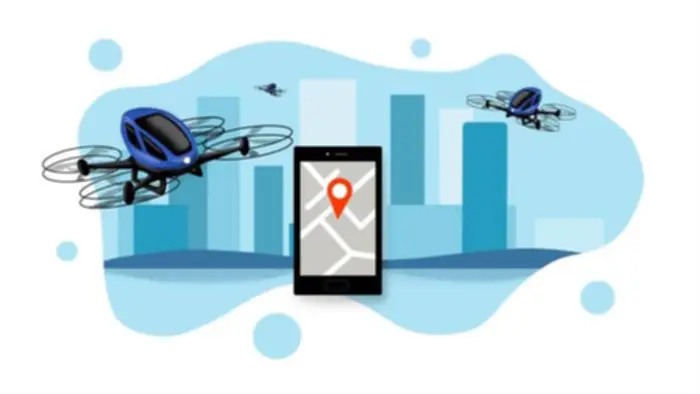Embedded Software Development Solutions: all you need to know

Do you know what is embedded software? You won’t believe it, but almost every person has encountered it at least once in their life. Most people don’t even know about it!
In this article, we shall talk about embedded software development, explain what it is, and cover its basic components. Read on and enjoy!

What is embedded software?
Briefly, embedded software is the functionally and features that are built in various machines. Examples include television sets, remote controls, and many other types of technology. You could even say that embedded software represents a device’s brain. Its absence turns the hardware into a useless piece of metal.
Embedded software development requires that specialists with a separate technology stack work on the project. The tasks have their own specifications and challenges, meaning that coders have to cope with new tasks in their daily routine.

We are confident that we have what it takes to help you get your platform from the idea throughout design and development phases, all the way to successful deployment in a production environment!
Basic examples of embedded software in life
While many people have encountered this type of software at least once in their life, most don’t even realize that is what it is. That is why we thought it would be reasonable to provide several examples which are met in everyday life.
- Traffic lights – control systems;
- Airplanes – control systems;
- Smart home devices – timing and automation features.
As you can see, embedded software is present in every area. It is an important part of almost any technology because people would have a hard time doing many routine actions without it.
Embedded software vs firmware
Many people use the terms firmware vs embedded software and often confuse others, so it is necessary that we provide some clarity before proceeding. While their idea is generally identic, there are some differences.
Firmware is a layer of software usually used to control devices like computers, laptops, and others. It isn’t the only software within the system, and it mostly comes with a PC motherboard. Firmware is also stored in flash memory that can be both inside or outside a microcontroller.
Embedded software can control the whole system and sometimes has its own OS. It’s generally used to control special devices like traffic lights, GPS systems, and others. Also, it is the only software running on the system. Embedded software is stored identically like the firmware.
As an example, firmware is the software you see when you use a motherboard (BIOS). When we speak of embedded software, those are the features that run a whole MP3 player. It’s all very similar but immensely different at the same time.
What are the components of an embedded system?
Generally, there are three main categories when speaking of embedded systems. Keep in mind that each option comes with several subdivisions that help it work properly.
- Hardware
- Software
- Operating system.
Let’s start with the hardware. It usually consists of several other options like features and buttons, a type of memory, a power supply (battery or outlet), timers, communication ports like USB, and a ton of other stuff. It takes quite a lot of knowledge to understand how hardware works.
Understanding software is a bit easier, especially when you’re a developer working with this type. Embedded software development usually involves creating the machine’s core with different languages like Python or C++. Every technology comes with its own pros and cons, so developers choose the best option themselves.
Finally, an operating system is specialized for completing a specific task within a device that isn’t a computer. It also makes it possible for additional software to be used with the hardware, assisting with communication.
What are the challenges of embedded software development?
Just like any other area within the IT industry, embedded software development comes with a variety of challenges. Most aren’t too scary for experienced coders, although they might cause some trouble. The three “S” challenges are:
- Stability
- Security
- Safety.
Stability is a crucial part of any embedded system, especially when this is a device that could cause an accident if it were broken. Such software should be as stable as possible because of its maximum responsibility. Could you imagine a traffic light go crazy? Well, the result can be life-threatening. This is unacceptable.
Security is also important because it is necessary that any hacking attempts are prevented before they even appear. One could call it the major weak spot of an embedded system because of its limited development possibilities. However, the specialists at the Global Cloud Team have several tricks to ensure maximum security.
Safety means the device with an embedded system can normally work in a hazardous environment and won’t blow up like a Samsung Galaxy Note 7. Developers work very hard to bring their customers the best software.
Develop your own embedded software
When you decide to develop an embedded system for your device, it is necessary that you work with a trustworthy team that won’t use the chance to hijack data or do anything of the kind. In short, just don’t order it from a bunch of hackers who promise a fortune.
The Global Cloud Team is a company that has many years of experience on the market. With over 113 completed projects and 450+ specialists, it is guaranteed that your software will have all three “S” criteria – stability, security, safety.
Leave a request via our contact form. A representative will get in touch with you as soon as possible. Don’t wait for your competitors to catch up!
Top Articles
ABC of DevOps Testing: Types, Best Practices, and Everything You Need to Know
I am here to help you!
Explore the possibility to hire a dedicated R&D team that helps your company to scale product development.






